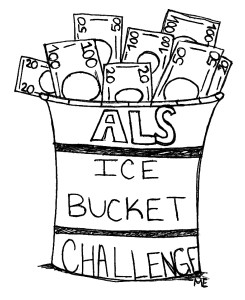Our view: The Ice Bucket Challenge may have been a fun way to promote a good cause, but it should also serve as a lesson that giving to charity should achieve more than entertaining us and making us feel momentarily good. Like buying a car, choose carefully which nonprofits you donate to.
We’ve all seen the videos. Some of us even made one, but how effective is the ice bucket challenge at actually helping the ALS Association “lead the fight to cure and treat ALS through global, cutting-edge research” as stated on the organization’s most recent 990 tax form.
The end goal of giving to charity is to make a difference in a social cause of our choice, meaning that we should take every precaution to ensure that our money is actually making it to those in need.
A story circulated on Facebook claiming that 73 percent of donations to ALSA are not used for research, causing some backlash against the movement. The story turned out to be a parody, but it raised a fair point that some nonprofits distribute their funds more effectively than others.
Like any important expenditure, we should do some shopping before we dump our money into a charitable organization. Prior research prevents us from being tricked into buying a hooptie (Susan G. Komen for the Cure) instead of a more efficient, durable car (BreastCancer.org).
Use tools such Charity Navigator, Charity Watch and the Better Business Bureau’s Wise Giving Alliance to determine which charity is the most trustworthy and effective.
Another problem highlighted by the ice bucket trend is the phenomenon of episodic giving. When a social cause gains prominence, such as Lou Gehrig’s disease, the donations pour in until our attention turns to something else.
Episodic giving is not good for a charity’s longevity. People want them to spend the money now, but if we don’t become long-term givers, it remains questionable how the ALSA will stay afloat without putting some of the money into their reserves.












